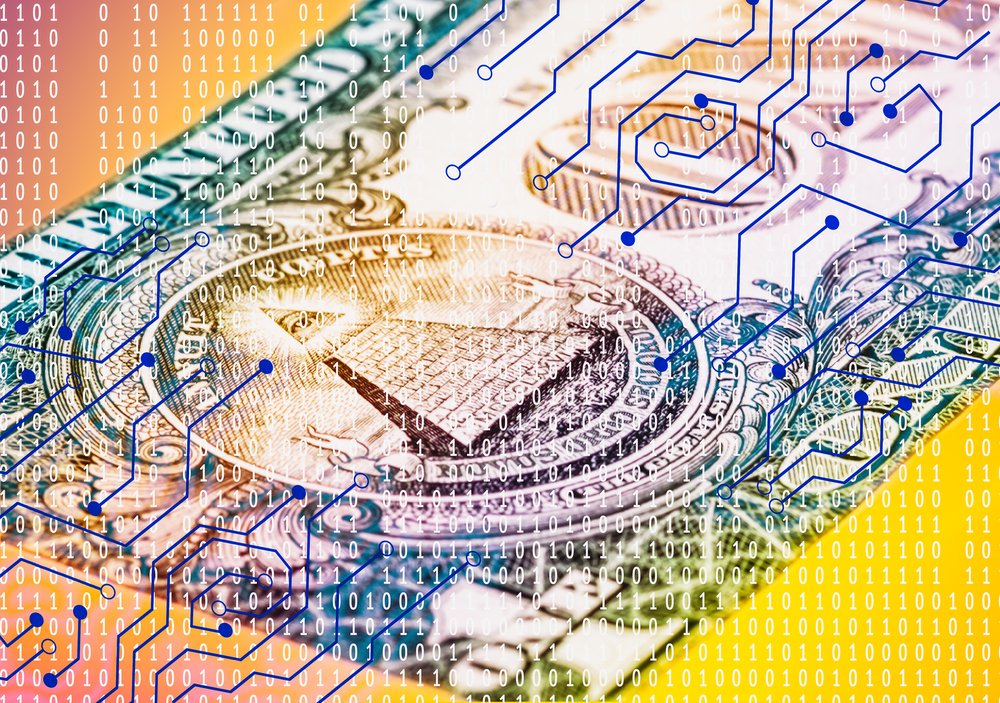Cryptocurrency is notorious for its volatility, but what if there were a way to remove this constant problem? While a cryptocurrency like Bitcoin is fungible, portable, durable, tradable, and valuable, it lacks a stable value. Mom and pop stores and large firms alike have been wary of accepting Bitcoin payments because price fluctuations aren’t a gamble they want to factor into running day to day business.
Some say stablecoins are the solution for cryptocurrency volatility, while others are skeptical of claims of controlling the will of a market. Are stablecoins the key to a stable digital currency or just a short-term investment trend that’s likely to fade?
What’s the Purpose of a Stablecoin?
With cryptocurrencies like Bitcoin and Ethereum continually changing value on any given day, not everyone wants to ride that price roller coaster all the time. Enter Stablecoins.
Stablecoins are digital assets designed to maintain a consistent price, often pegged to a fiat currency like the US dollar or collateralized against commodities like gold. They are a store of value like the money you’d traditionally keep in a savings account and not a speculative investment. They’re backed by real-world collateral, rather than mined or distributed. All commodities including the US dollar and gold (or any tradable asset, for that matter) are part of an open market. Since other commodities fluctuate in value, how can stablecoins truly control their values over time?
Stable in Name Only?
By design, stablecoins should not fluctuate much in price, but an early stablecoin, Bitshares, and a recent stablecoin, the Dai from MakerDAO, both show that volatility might not be so easy to control.
As seen below, one DAI was supposed to be worth US$1, but it’s been as low as US$0.82 and as high as US$1.17 just in the last few months.


Pegged to the US Dollar: Tether, Nubits, Truecoin
Tether is the most successful and widely-known stablecoin; it’s an ERC-20 token supported on the Ethereum Network. It’s only sold and not bought back; you have to sell it to other people. Tether sells Tethers for US$1, and that’s all they do. If you want to get rid of your Tether, you have to sell it on the open market for whatever you can get, which is sometimes a little more or less than you think. This can be frustrating if you want to count on your money having a specific value only to find it’s not tradable at that price.
Tether is valued at over US$2.3 billion dollars, which is the 15th highest market cap listed on CoinMarketCap. In December 2017, the FTC subpoenaed Tether, and it continues to investigate whether Tether truly owns more than two billion dollars in its reserves.
Like Tether, NuBits are pegged to the US dollar, with one dollar equivalent to one NuBit. Its claim to fame is that it’s the first stablecoin to sustain a yearlong $1 value. NuBits controls its coin’s value by getting shareholders to place buy and sell orders at US$1.00 for Nubits, rewarding them with revenue from sales of NuBit’s external cryptocurrency, NuShares.
Pegged to Gold: Digix
Digix maintains a one-to-one ratio between its DGX token and the price of one gram of gold. You can trade your DGX for actual gold, as it’s backed by the gold standard of yore, which used to support the dollar.
Stablecoins backed by multiple commodities: MakerDAO, WorldFree
MakerDAO uses a smart contract-based trading system to maintain a stable value for its stablecoin, the DAI. Like Tether and NuBits, the DAI is pegged to the dollar, but its price has fluctuated a few times, decreasing to around eighty cents on the low end.
MakerDAO started out in 2014 without an ICO or advertising, focusing on security, just as Bitshares came to market as the first stablecoin attempt. In a presentation in NYC last month, CEO Rune Christiansen explained that “DAI remains stable similarly to the gold standard” using a collateralized debt system. Anyone holding its governance token, Maker (MKR), makes decisions about businesses putting up collateral to borrow its equivalent in DAI. Holders of MKR collect bonus funds when the price of DAI exceeds a dollar (rewards are sent by trading bots), but they can also lose value if the DAI price drops, and MKR tokens are automatically sold to prop the DAI price back up to a dollar.
The Freemark, offered by Worldfree, is an asset-backed stablecoin. It’s managed in an audited fund producing an endowment scale return, which provides the liquidity and facilitates royalty payments on the growth of the money supply. Its founder explains, “It runs on a Nodechain, which offers transaction speed much faster than a blockchain, at much greater security.” Freemark investors are rewarded over time in Freemarks.
Tied to Oil: The Petro (Pretty Slick)
The Venezuelan Petro is the new national cryptocurrency of Venezuela, with 100 million Petros backed by 100 million barrels of oil. The Venezuelan government has an ugly history with crypto, and mining has cost many citizens their lives. But if you can’t beat crypto, why not join it? Venezuela’s Petro is an attempt to capitalize on its citizens’ interest in crypto, as many have converted their life savings into crypto in response to the volatility of the Venezuelan fiat currency.
We want control, but is it truly in reach?
We have a strong desire for security as humans. For business owners, accepting an unstable currency in exchange for goods doesn’t make sense, and while this is one of the barriers to major adoption of cryptocurrencies as payments, fixing their prices might not be the answer. Neither currencies nor markets are closed systems, so while stablecoins are a grand idea, they may not be the solution.

